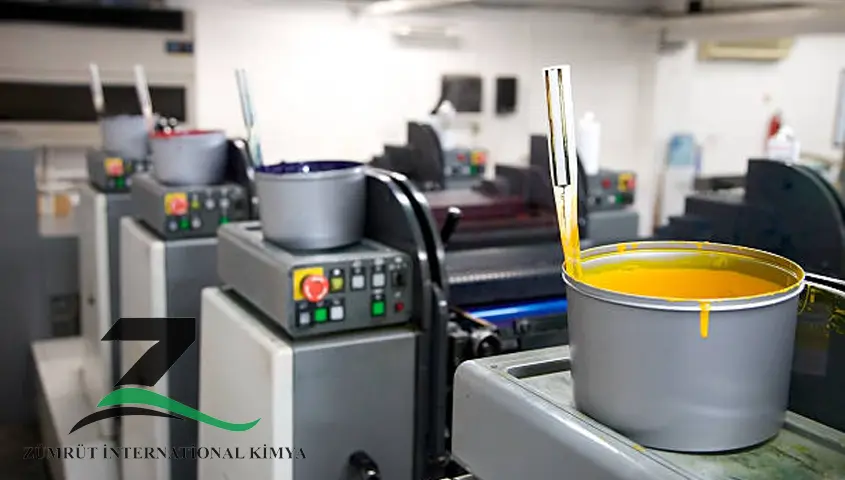The Role of Polyethylene Wax in Coatings and Inks: Enhancing Performance and Sustainability

Introduction
Polyethylene wax in coatings and inks serves as a vital polymer additive, improving durability, slip properties, and overall efficiency. Derived from ethylene polymerization, this versatile material offers unique polyethylene wax properties like thermal stability and abrasion resistance. As industries demand sustainable solutions, polyethylene wax applications continue to evolve, making it essential for modern formulations. In this article, we explore its benefits, uses, and future trends, drawing on expertise from leading suppliers like ZÜMRÜT International Kimya Co.
Overview of Polyethylene Wax Properties
Polyethylene wax is a low-molecular-weight thermoplastic polymer (typically 2,000–20,000 g/mol) available in non-oxidized and oxidized forms. Non-oxidized types excel as slip agents, while oxidized variants provide better adhesion through carboxylic acid groups. Key polyethylene wax properties include a low melting point (100–120°C), high lubricity, UV resistance, and compatibility with various resins and solvents.
These attributes make it a go-to choice among coatings additives and inks additives, ensuring chemical inertness and long-term stability in demanding environments.
Polyethylene Wax in Coatings: Key Applications and Benefits
Polyethylene wax in coatings acts as a surface modifier, enhancing performance in automotive, architectural, and industrial applications. It reduces friction and improves flow, leading to smoother application and reduced defects.
Abrasion Resistance and Durability
In high-wear scenarios like automotive finishes or floor paints, polyethylene wax forms a protective layer that boosts abrasion resistance. This extends product lifespan and minimizes maintenance costs.
Slip Agents and Anti-Blocking Properties
As effective slip agents, these waxes prevent blocking in packaging films and architectural coatings. For instance, they reduce tackiness, enabling easy handling and storage without adhesion issues.
Adhesion and Weather Resistance
Oxidized polyethylene wax promotes adhesion in multi-layer systems, while its UV resistance protects exterior coatings from environmental damage. This makes it ideal for sustainable coatings in harsh climates.
Overall, polyethylene wax applications in coatings deliver cost-effective enhancements, with versatility across solvent-based, water-based, and UV-curable systems.
Polyethylene Wax in Inks: Improving Print Quality and Efficiency
Polyethylene wax in inks optimizes print processes, from offset to flexographic printing. As an ink additive, it enhances rub resistance and prevents issues like scuffing or set-off.
Print Quality and Ink Transfer
In flexographic and gravure inks, it improves sharpness and color consistency by facilitating efficient ink transfer. This is crucial for high-speed operations in packaging and labels.
Anti-Blocking Agents and Rub Resistance
Acting as anti-blocking agents, polyethylene wax prevents ink layers from sticking in printed materials like newspapers or corrugated boxes. It also increases rub resistance, ensuring durability during shipping.
Gloss Control and Film Formation
The wax modifies drying times, promoting uniform film formation and customizable gloss levels. This is especially valuable in flexible packaging inks for aesthetic appeal.
These polyethylene wax applications streamline production, reducing downtime and waste in the inks industry.
Benefits and Advantages of Using Polyethylene Wax
Polyethylene wax offers numerous advantages as a polymer additive:
- Cost-Effectiveness: Affordable compared to other surface modifiers, delivering high value.
- Versatility: Compatible with diverse formulations, including bio-based waxes for eco-friendly options.
- Process Efficiency: Minimizes clogging and enhances thermal stability in manufacturing.
- Customizability: Available in grades varying by particle size and melt viscosity.
For more insights on polyethylene wax benefits, explore resources from industry leaders like BASF’s wax additives guide (external link for reference).
Environmental Considerations and Sustainability
Polyethylene wax is non-toxic and often FDA-compliant for food-contact uses. However, sustainability is key: modern bio-based waxes from renewable sources reduce environmental impact. Innovations focus on recyclability and low-migration designs, aligning with regulations like EU REACH.
Challenges include potential migration in packaging, which requires precise dosing. By addressing these, polyethylene wax supports greener coatings, additives, and inks.
Challenges and Best Practices
While effective, overuse can cause brittleness or reduced adhesion. Best practices include testing compatibility and adhering to dosage guidelines. Regulatory compliance ensures safe polyethylene wax applications across sectors.
Conclusion and Future Trends
Polyethylene wax in coatings and inks remains indispensable for boosting performance, from abrasion resistance to slip properties. Future trends point to nanotechnology-enhanced versions and sustainable bio-based waxes, expanding their role in smart coatings and high-tech inks.
As a trusted supplier, ZÜMRÜT International Kimya Co. specializes in high-quality polyethylene wax solutions tailored to your needs. Contact us today to discuss how we can optimize your formulations.
Ready to enhance your coatings and inks with premium polyethylene wax? Reach out to ZÜMRÜT International Kimya Co. for expert advice and products. (Contact Us)
📞 Phone/WhatsApp: +971 50 720 9246
📧 Email: info@causticsodaco.com
🌐 Website: www.causticsodaco.com

